
The National Company of Light Railways was a state-owned transportation provider which comprised a system of narrow-gauge tramways or local railways in Belgium, which covered the whole country, including the countryside, and had a greater route length than the mainline railway system. They were 1,000 mmmetre gauge and included electrified city lines and rural lines using steam locomotives and diesel railcars; half the system was electrified.

Établissements Billard was a French railway rolling stock construction company founded in 1920 and based in Tours. It specialised in light railbuses and metre gauge and narrow gauge rolling stock. The business ceased trading in 1956 and later became Socofer.

Decauville was a manufacturing company which was founded by Paul Decauville (1846–1922), a French pioneer in industrial railways. Decauville's major innovation was the use of ready-made sections of light, narrow gauge track fastened to steel sleepers; this track was portable and could be disassembled and transported very easily.

The Chemin de Fer de la Baie de Somme, is a preserved railway in northern France. The railway is managed by a non-profit organization, which runs from March to December between the towns of the Baie de Somme area: Le Crotoy and Cayeux-sur-Mer via Noyelles-sur-Mer and Saint-Valery-sur-Somme, on metre gauge tracks. The association was founded in 1970 and over the years it has become a major player in tourism development in the Picardy coast and is also responsible for the preservation, safeguarding and enhancement of the fleet full of cars, wagons, steam locomotives and diesel locomotives. The line is one of the closest French heritage lines to the UK, Noyelles is 73 kilometres (45 mi) from Boulogne-sur-Mer and 105 kilometres (65 mi) from Calais. A part of the line has dual gauge track, and although forming part of a group of five lines, at least a part of it has always been open to traffic.
The Société Nationale des Chemins de Fer Tunisiens, abbreviated SNCFT, is the national railway of Tunisia and under the direction of the Ministry of Transport. SNCFT was founded on December 27, 1956 It Replaced the Tunisian Railway Farms Company (CFT). Headquartered in Tunis the company employs about 6000 people. SNCFT provides both passenger and freight services at a national level.

The National Rail Transportation Company is Algeria's national railway operator. The SNTF, a state-owned company, currently has a monopoly over Algeria's rail network of 3,973 km (2,469 mi), although it is currently utilising only 3,572 km (2,220 mi). Out of the total railway network, 2,888 km (1,795 mi) are 1,435 mmstandard gauge and 1,085 km (674 mi) are 1,055 mm narrow gauge.

The Chemins de fer du Morbihan (CM) was a metre gauge railway in Morbihan, France, with some track in Loire-Inférieure. The first lines opened in 1902 and the system had a total extent of 433 kilometres (269 mi).
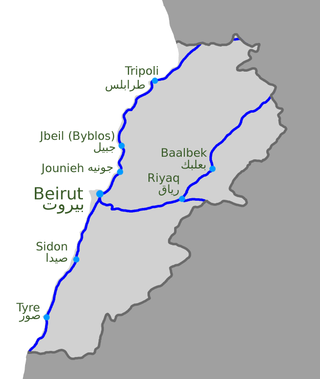
Rail transport in Lebanon began in the 1890s as French projects under the Ottoman Empire but largely ceased in the 1970s owing to the country's civil war. The last remaining routes ended for economic reasons in the 1990s. At its peak Lebanon had about 408 kilometres (254 mi) of railway.
Rail transport in Morocco was initially developed during the protectorate. It functioned primarily as a means to mobilize colonial troops and to transport natural resources. Later, a standard-gauge network was built.

Benin has a total of 578 km (359 mi) of single track, 1,000 mm railway. Rail construction began around 1900, with regular services commencing in 1906; rail operation was taken into government control in 1930.
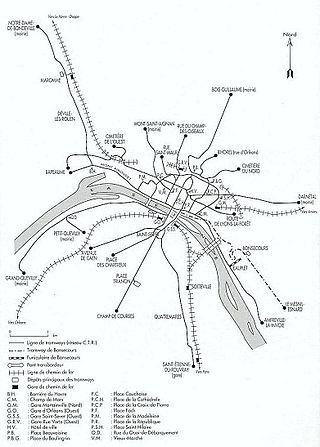
There have been two separate generations of trams in Rouen. The first generation tramway was a tram network built in Rouen, Normandy, northern France, that started service in 1877, and finally closed in 1953. There were no trams at all in Rouen between 1953 and 1994, when the modern Rouen tramway opened.

The Tramway d'Avranches was a 2.7 kilometres long tramway system serving the coastal town of Avranches, France.

The history of rail transport in Luxembourg began in 1846 and continues to the present day.
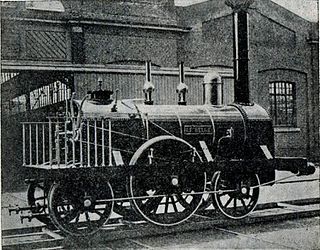
Belgium was heavily involved in the early development of railway transport. Belgium was the second country in Europe, after Great Britain, to open a railway and produce locomotives. The first line, between the cities of Brussels and Mechelen opened in 1835. Belgium was the first state in Europe to create a national railway network and the first to possess a nationalised railway system. The network expanded fast as Belgium industrialised, and by the early 20th century was increasingly under state-control. The nationalised railways, under the umbrella organisation National Railway Company of Belgium (NMBS/SNCB), retained their monopoly until liberalisation in the 2000s.
The French National Railways used to run a considerable number of 1,000 mmmetre gauge lines, a few of which still operate mostly in tourist areas, such as the St Gervais-Vallorcine (Alps) and the "Petit Train Jaune" in the Pyrenees. The original French scheme was that every sous-prefecture should be rail connected. Extensive 600 mm gauge lines were also built for the sugar-beet industry in the north often using ex-military equipment after the First World War. Decauville was a famous French manufacturer of industrial narrow-gauge railway equipment and equipped one of the most extensive regional 600 mm narrow-gauge railway, the Chemins de fer du Calvados. Corsica has a narrow-gauge network of two lines following the coast line, that are connected by one line crossing the island through highly mountainous terrain. The petit train d'Artouste, a tourist line in the Pyrenees, uses 500 mm gauge.

The Chambéry tramway was from 1892 to 1932 an up to 31 km (19 mi) long narrow-gauge steam tram network with 33 halts on four lines in Chambéry in Savoy in France.
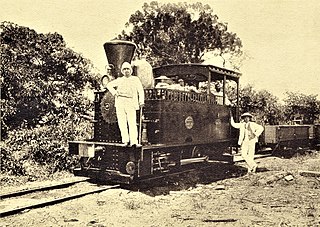
The Compagnie du chemin de fer du Congo supérieur aux Grands Lacs africains was a Belgian railway company established in 1902 in the Congo Free State, later the Belgian Congo, now the Democratic Republic of the Congo. It provided service in the eastern part of the colony south of Stanleyville (Kisangani) to serve the settlers and mining operations in Katanga. It operated a combination of river steamer service along the Lualaba River and railway links where the river was not navigable, including a link to Lake Tanganyika. In 1960 it became the Société congolaise des chemins de fer des Grands Lacs.
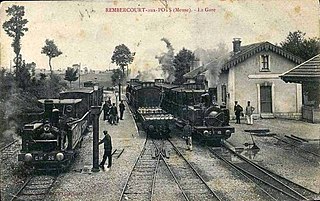
The Compagnie Meusienne de Chemins de Fer operated from 1888 to 1922 a 203 km (130 mi) long metre gauge rail network in the French Département Meuse. Its most westerly branch was built by the Compagnie des Chemins de Fer d'Intérêt Local de la Meuse and commissioned section by section since 1878. The Société Générale des Chemins de Fer Économiques took over the network in 1922 and operated it until decline and closure between 1929 and 1938.

The history of rail transport in Algeria began in 1857 during the French colonization with the implementation of an initial plan for the creation of a 1,357 kilometres (843 mi) railway network. This plan, formalized by a decree from Emperor Napoleon III, defined the initial framework of the Algerian railway network, which continued to evolve throughout the second half of the 19th century, both in terms of its scale and structure.

The Tramways de Royan were two narrow-gauge railways that provided mainly passenger transport in and around the coastal resort town of Royan in western France.




















